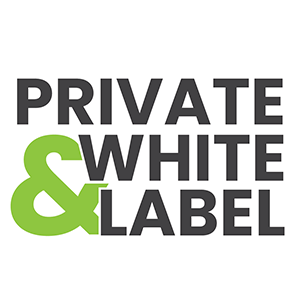Navigating CBD Labeling Laws: What Consumers and Brands Need to Know
Introduction
The CBD industry has blossomed over the past few years, transforming into a market brimming with potential. However, along with this growth comes a complex and evolving regulatory landscape that can be daunting for both consumers and brands. Understanding CBD labeling requirements is not just a matter of compliance but also essential for ensuring safety and transparency in an often opaque market. This guide aims to shed light on the critical aspects of CBD labeling laws, helping you navigate what is necessary for compliant CBD products.
Understanding CBD Labeling Requirements
Battling your way through the myriad of labels on CBD products can feel like deciphering a complex code. But fear not—let’s break it down into clear, digestible pieces.
Product Identity and Content Information
First and foremost, a product’s identity should be straightforward. Labels must clearly specify what the product is, whether it’s oil, capsules, or topicals, along with any relevant strains or formulations. This is typically displayed on the Product Display Panel (PDP) and should resonate with both first-time buyers and seasoned CBD users alike.
Net Quantity of Contents and Active CBD/THC
Every label should indicate the net quantity of the product, excluding packaging. Moreover, consumers need to know how much active CBD or THC they are consuming per serving, typically measured in weight (milligrams) or volume (milliliters). Clear and prominent display of this information helps consumers make informed choices about their purchases.
Ingredient List and Dosage
Transparency is key. An exhaustive ingredient list is mandatory, including the amounts of each ingredient, to ensure consumers are well-acquainted with what they’re consuming. Dosage instructions and serving sizes should also be prominently featured, minimizing any confusion about consumption levels.
Manufacturer and Distributor Information
Consumers deserve to know who’s behind the products they’re purchasing. Therefore, labels must include the name, address, and contact information of the manufacturer or distributor. While including a phone number is not a requirement, it’s a good practice for enhancing consumer trust and accountability.
Compliance with Federal and State Regulations
Navigating regulations can be tricky when they vary significantly across federal and state levels. Understanding these nuances is vital for brands striving for compliance and consumers aiming to make informed decisions.
Federal Guidelines
Despite a lack of stringent regulations on a federal level, some basic guidelines are established by the Food and Drug Administration (FDA) and the Food, Drug, and Cosmetic Act (FDCA). Key points include:
- No False or Misleading Claims: Brands cannot make unfounded claims about treating or preventing diseases without reliable scientific evidence. Ignoring this can lead to enforcement actions from the FDA.
- Adherence to the Poison Prevention Packaging Act: This act mandates that products are packaged in a manner that prevents accidental ingestion, particularly by children.
State-Specific Regulations
State regulations differ widely, which means brands must research and comply with the laws of each state they wish to sell in. Here are a few critical points to consider:
- QR Codes and Certificates of Analysis: Many states, like Florida, require labels to feature a scannable QR code or barcode linking to a Certificate of Analysis (COA), providing transparency about the product’s composition and batch numbers.
- Warning Statements: In states such as California, specific warning labels must accompany products containing THC or that can expose consumers to cannabis smoke.
- Age Restrictions: Some states impose age limits for products, like New York, which restricts smokable hemp products to consumers who are 21 and older.
Best Practices for CBD Brands
Brands looking to carve a trustworthy space in the CBD market should integrate several best practices:
Transparency and Legibility
A label should not merely follow regulations; it should serve as a communication tool. Ensure that every piece of required information, from batch numbers to expiration dates, is displayed clearly. Customers greatly appreciate transparency, and this can boost consumer loyalty.
Avoiding Health Claims
Exercise caution when discussing the benefits of your product. Unsubstantiated health claims can result in severe repercussions from the FDA and FTC, including fines. Stick to factual statements and avoid anything that sounds too good to be true.
Technological Integration
Embracing technology can bridge the gap between regulatory compliance and consumer awareness. By incorporating QR codes on labels, brands can link to detailed product information and COAs, providing a wealth of information at consumers’ fingertips.
Consumer Safety and Awareness
While brands bear a significant responsibility regarding labeling, consumers also play a crucial role in their safety and well-being.
Reading Labels Carefully
Before purchasing any CBD product, take a moment to analyze the label. Are the ingredients clearly listed? Is the dosage easy to understand? Are there any warning statements? A little due diligence can go a long way in ensuring you know what you’re ingesting.
Checking for Compliance
Verify if the product complies with legal requirements by looking for the manufacturer’s details and links to the COA. This simple step can vastly enhance your confidence in a product’s safety and effectiveness.
Conclusion
The maze of CBD labeling laws may feel overwhelming, yet they coexist as essential guidelines for both consumers and brands. By familiarizing themselves with federal and state regulations, brands can achieve compliance and foster a relationship built on trust with their customers. Meanwhile, consumers educate themselves by reading labels carefully and verifying compliance can make informed choices about the CBD products they choose to incorporate into their wellness routines.
Actionable Tips
- Stay Updated: Regularly check for the updates in state and federal regulations to maintain compliance.
- Be Transparent: Include detailed information on the label to build consumer trust.
- Avoid Misleading Claims: Ensure that all claims are scientifically substantiated to avoid legal ramifications.
- Use QR Codes: Incorporate scannable codes to link to COAs and detailed product information.
By adhering to these guidelines, brands can help shape a more trustworthy and informative CBD industry, while consumers can navigate this world with renewed confidence and clarity.
Additional Resources
- FDA Guidelines: For more on federal regulations, refer to the FDA’s resources on cannabis products.
- State Regulatory Websites: Check the regulatory websites in your state for specific labeling requirements.
- Industry Blogs and Forums: Stay informed about the latest trends and regulatory changes within the industry through dedicated blogs and forums.
By remaining vigilant and informed, both brands and consumers can contribute to a thriving, compliant CBD space that prioritizes safety and efficacy.



















